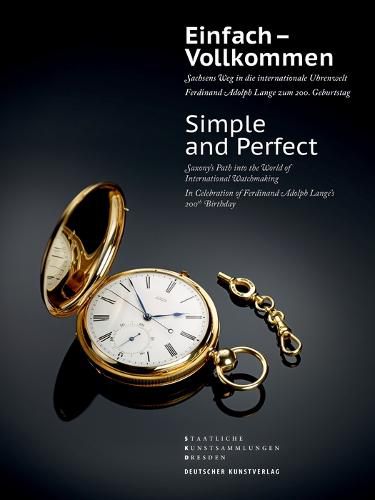Readings Newsletter
Become a Readings Member to make your shopping experience even easier.
Sign in or sign up for free!
You’re not far away from qualifying for FREE standard shipping within Australia
You’ve qualified for FREE standard shipping within Australia
The cart is loading…






To mark the occasion of the 200th birthday of Ferdinand Adolph Lange, the Staatliche Kunstsammlungen Dresden are organizing an exhibition that will trace the history of making precision timepieces in Saxony. The amateur Johann Heinrich Seyffert, the future master horologist Johann Christian Friedrich Gutkaes and the successful watch manufacturer Ferdinand Adolph Lange represent this development from the first precision watches to the high-quality serial production of pocket watches. Decisive technical innovations can be traced back to Paris and London, the watchmaking centers of the 18th and early 19th centuries, while the French-speaking western part of Switzerland perfected a production system based on a division of labor. Lange successfully carried out these standards of international watchmaking in the Saxon town of Glashutte, and his acclaim is also indebted to the existence of the Mathematisch- Physikalischer Salon. As a site used for observing astronomy, the Salon was dependent on the accuracy of time measurement and served as an authoritative interface in which scientific needs and technical skills were bound together.
$9.00 standard shipping within Australia
FREE standard shipping within Australia for orders over $100.00
Express & International shipping calculated at checkout
To mark the occasion of the 200th birthday of Ferdinand Adolph Lange, the Staatliche Kunstsammlungen Dresden are organizing an exhibition that will trace the history of making precision timepieces in Saxony. The amateur Johann Heinrich Seyffert, the future master horologist Johann Christian Friedrich Gutkaes and the successful watch manufacturer Ferdinand Adolph Lange represent this development from the first precision watches to the high-quality serial production of pocket watches. Decisive technical innovations can be traced back to Paris and London, the watchmaking centers of the 18th and early 19th centuries, while the French-speaking western part of Switzerland perfected a production system based on a division of labor. Lange successfully carried out these standards of international watchmaking in the Saxon town of Glashutte, and his acclaim is also indebted to the existence of the Mathematisch- Physikalischer Salon. As a site used for observing astronomy, the Salon was dependent on the accuracy of time measurement and served as an authoritative interface in which scientific needs and technical skills were bound together.